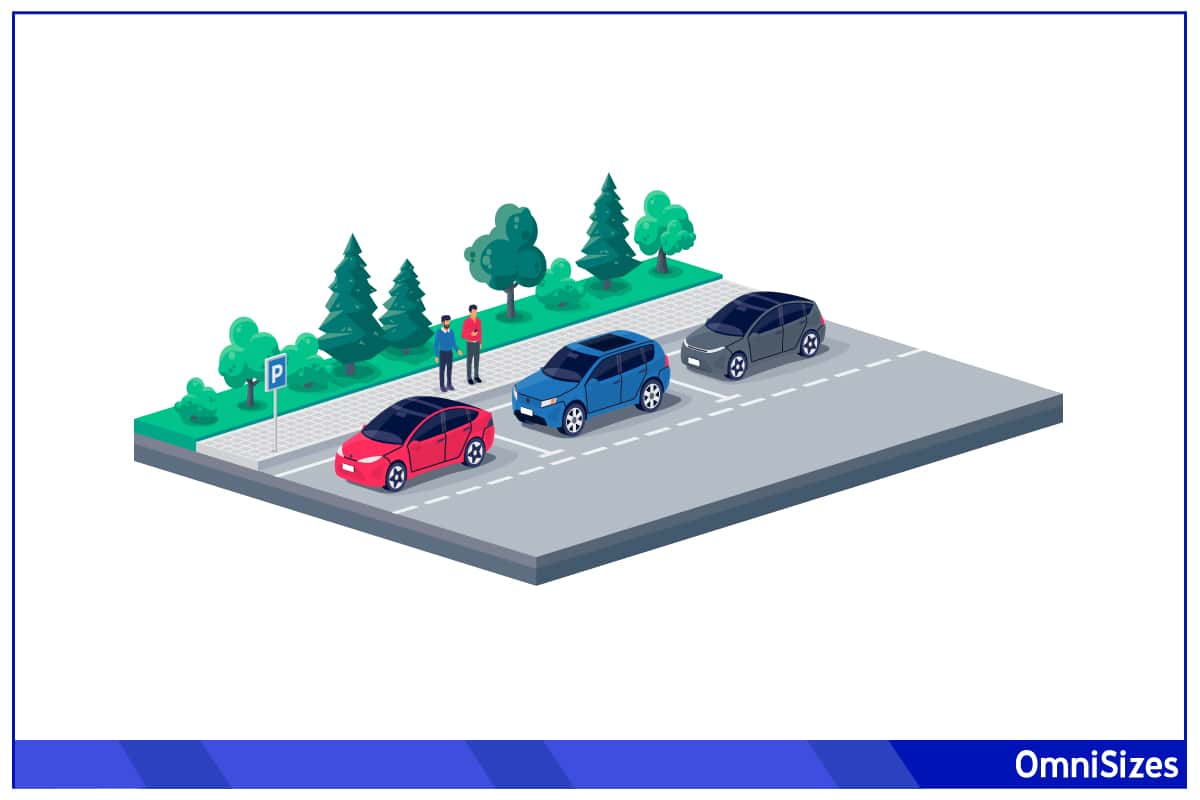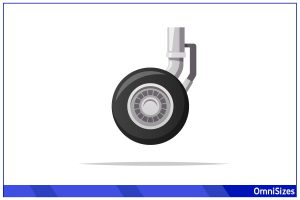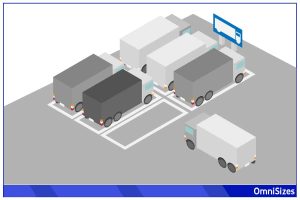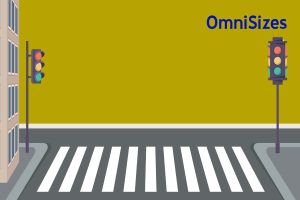Navigating the world of parking can be tricky, especially when it comes to the art of parallel parking. A key factor in mastering this skill is understanding parallel parking dimensions. Whether you’re a new driver or seasoned behind the wheel, knowing these dimensions can make all the difference.
The size of a parallel parking spot varies from place to place and for different vehicles. The average parallel parking dimension in the US is between 22 and 26 feet long and 8 feet wide. For compact vehicles, these parking spots shrink to 20 × 7 feet.
This guide will cover standard parallel parking space dimensions and how vehicle size categories affect parking space sizes, as well as provide a few pointers for parallel parking in tight spaces.
Standard Parallel Parking Space Dimensions
Parallel parking spaces are spots between 2 cars on the street where you have to squeeze in just right. Most spots are designed to fit a range of cars, from a compact ride to a large sedan.
Average Dimensions in the US
In the US, the average parallel parking spot is a roomy 22-26 feet long and 8 feet wide. This space is generous enough for most cars, giving drivers enough space to park without turning it into a bumper car game.
Compact Cars and Parallel Parking
Compact cars are small, nimble, and can fit into spots that bigger cars wouldn’t even dream of. Generally speaking, compact cars may park in standard parallel parking spaces. However, there are parallel parking spots designed specifically for compact vehicles, typically measuring 20 × 7 feet. Some places like Redlands, CA, are as small as 15 × 8 feet!
How Dimensions Vary by Location
In different places, parallel parking can differ significantly. A general rule of thumb regarding parallel parking spaces is bustling metros usually have smaller spaces due to high demand. However, there is always an exception to every rule.
For starters, New York parallel parking spots are 24 × 8.5 feet. As a comparison, the same type of parking spot in Dallas must measure 22 × 8 feet.
Different countries can have drastically different parallel parking specifications. In Australia, these spaces measure 7.8 × 3.2 meters (about 26 × 10 feet), while it’s much smaller in some places in the UK (6 × 2 meters or about 20 × 6.5 feet).
Parallel Parking Dimensions for Special Vehicles
Now, let’s shift gears and talk about special vehicles—big delivery trucks, minibuses, and those cars with special tags for disabilities. These aren’t your average family cars, and they need some extra room when it comes to parallel parking.
Commercial Vehicles and Larger Trucks
The length of commercial vehicles often exceeds the average car by a good few feet, so finding a spot that can accommodate can be a safety concern. It’s not just about the length, though; these vehicles are also wider and taller, meaning you need to watch out for overhead obstacles and ensure there’s enough clearance on either side. In general, parallel parking spots for commercial vehicles are 15 feet longer than the vehicle length (usually 40 feet) and 12 feet wide.
Handicapped-Accessible Vehicle Parking Dimensions
For those with disabilities, parking is more about accessibility. The Americans with Disabilities Act (ADA) sets the standard here. Handicapped-accessible parking spaces are typically wider–8 feet wide with an additional 5-foot access aisle beside them. This extra space is vital for wheelchairs and mobility devices.
Techniques and Tips for Parallel Parking in Tight Spaces
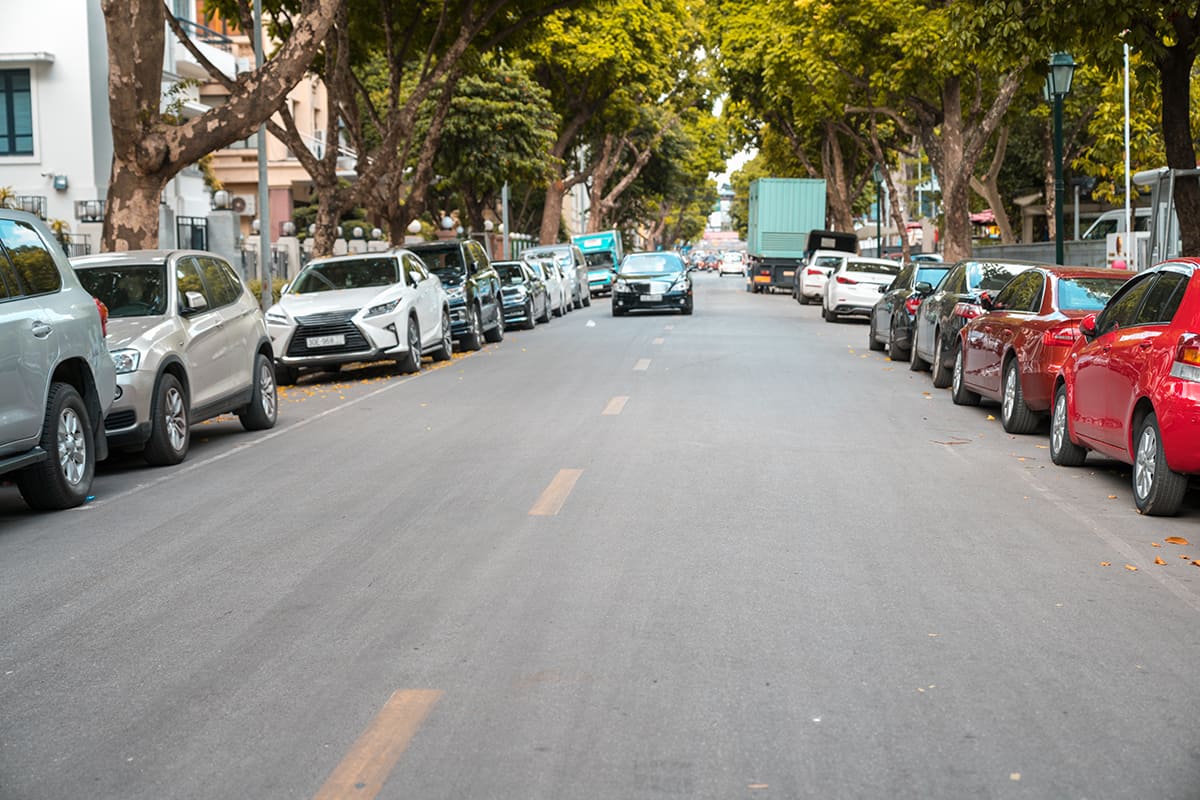
Parallel parking is all about the technique. Tight spaces can be intimidating, but with the right approach, you can slide into them like a pro.
1. Assessing the Space
First up, size up that spot. Is it really big enough for your car? You need a space that’s at least one and a half times the length of your car. Pull up next to the car in front of the spot, aligning your rear tires with that car’s rear bumper. This gives you a good angle to start.
2. The Reverse-Into-Spot Maneuver
Now, for the main move: reversing into the spot. Turn your wheel sharply towards the curb as you start backing up. When your front door aligns with the other car’s rear bumper, straighten the wheel and keep going back. Once your car’s rear starts to clear the car behind the parking space, cut the wheel the other way to swing the front in.
3. Fine-Tuning Your Position
Adjust your position while turning your steering wheel to get your car parallel to the curb. If this is your first attempt, it may take multiple forward and backward movements before your tires are positioned correctly.
4. Exiting the Tight Spot
Leaving a tight parking spot can be just as tricky. Start by turning your wheel towards the street and slowly move forward until the back of your front seat aligns with the rear bumper of the car in front. Now, sharply turn your wheel the other way and reverse. Keep an eye on the car behind you to avoid any bumps.
FAQs
1. How do I know if a space is too small for my vehicle before attempting to park?
The ideal length is approximately one and a half times your vehicle’s length. If the space seems just about equal to your car’s length, try to find a larger spot to avoid a tight squeeze and potential damage.
2. How much space should I leave between my car and the curb?
It’s recommended to maintain a distance of 12 to 18 inches from the curb. This spacing ensures that your vehicle is safely away from passing traffic while preventing curb-related wheel or tire damage. You should always check the parking lines on both sides of your vehicle to make sure you’re not too close or too far from the curb.
3. Is it better to park in reverse or nose-first in a parallel spot?
Reversing into a parallel parking spot is generally preferred. This method offers greater maneuverability and improved visibility of the parking space and surrounding area. You can typically go nose-first into a parallel parking spot if there are no vehicles in front of your chosen parking spot.
For more types of parking spaces and their dimensions, visit our article ‘ Parking Space Dimensions ‘
